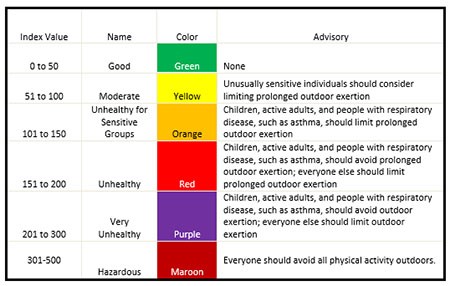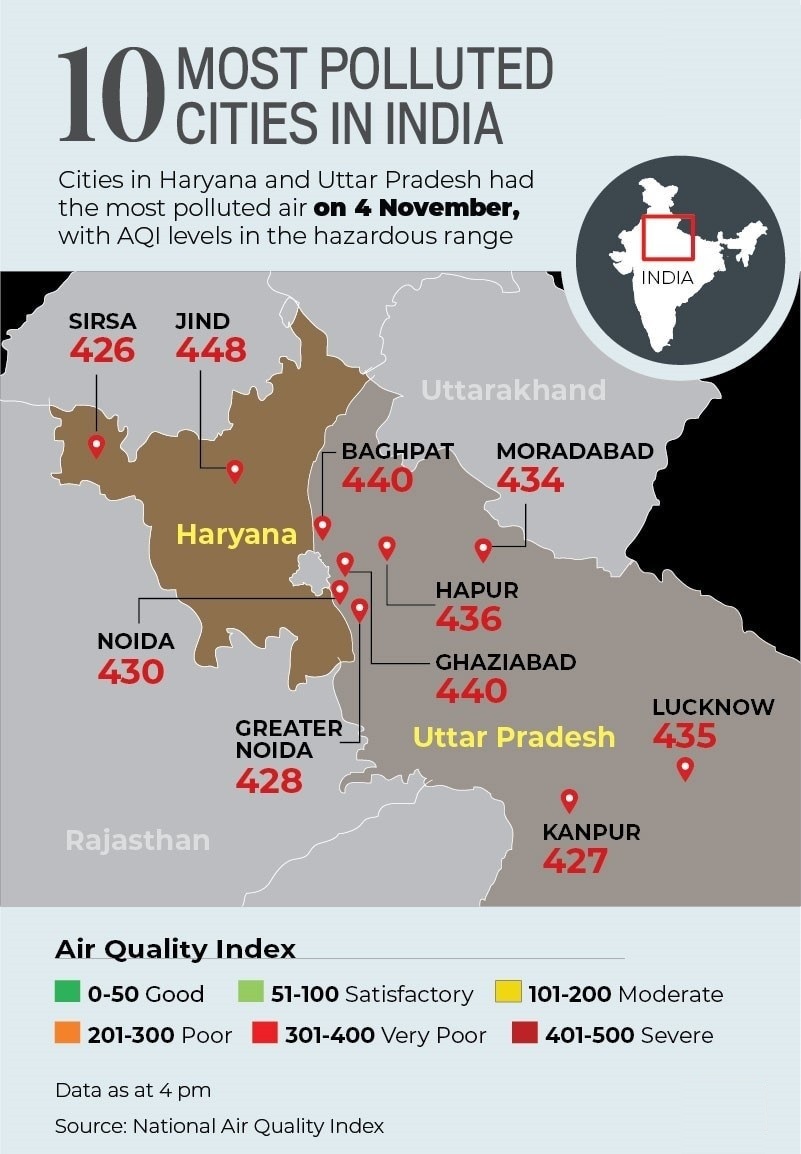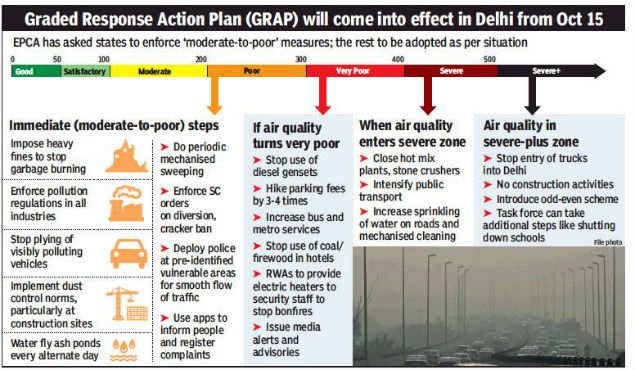PREVIOUS
Air Pollution in Delhi and Uttar Pradesh
November 7 , 2019
1918 days
1911
0
- Pollution levels in Delhi and neighbouring NCR region escalated to hazardous levels.
- The visibility was dropped significantly after a thick blanket of smog engulfed.
- The air quality index (AQI) was bordering the 'severe plus' category at several places.
- In certain places it docked as high as 625.
- Air Quality Index
-
- 0-50 is considered as 'good',
- 51-100 as 'satisfactory',
- 101-200 as 'moderate',
- 201-300 as 'poor',
- 301-400 as 'very poor', and
- 401-500 as 'severe'.
- Anything above 500 comes under 'severe-plus emergency' category.

High pollution
- Six UP cities were among the top 10 most polluted places in the country with Air Quality Index (AQI) in ‘severe category’ (400).
- It is an alarming situation as per the Central Pollution Control Board.
- The average AQI (Air Quality Index) calculated for 24 hours (November 3, 4 pm to November 4, 4 pm) showed that Jind in Haryana had the most toxic air among 97 cities analysed.
- A total of 15 cities had an average AQI above 400.
- Of these, nine are in Uttar Pradesh and five in Haryana, apart from Delhi.
- Eight UP cities followed Jind for having the most toxic air quality.
- There are only four cities in India with 'good' air quality, of which two are in Kerala.
- Eloor, a suburb of Kochi in Kerala, recorded the best air quality with an AQI of 25.
- Eloor is followed by Thane near Mumbai (AQI 45), Thiruvananthapuram in Kerala (AQI 49) and Kota in Rajasthan (AQI 50).

SC court on Pollution
- The Apex court said that Punjab and Haryana have to extinguish fire from stubbles in agricultural fields.
- The court also sought a road-map from the Centre and the governments of Delhi, Punjab and Haryana to stop pollution on long-term.
Graded Response Action Plan (GRAP)
- It was formulated in 2016 and approved by the Supreme Court in the same year.
- When the air quality shifts from poor to very poor, the measures listed have to be followed since the plan is incremental in nature.
- If air quality reaches the severe stage, GRAP talked about shutting down schools and implementing the odd-even road-space rationing scheme.
- The plan requires action and coordination among 13 different agencies in Delhi, Uttar Pradesh, Haryana and Rajasthan.

Leave a Reply
Your Comment is awaiting moderation.


